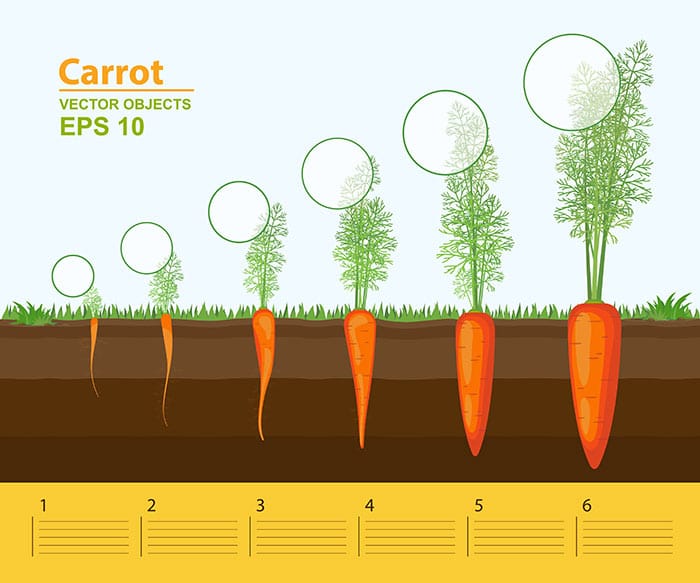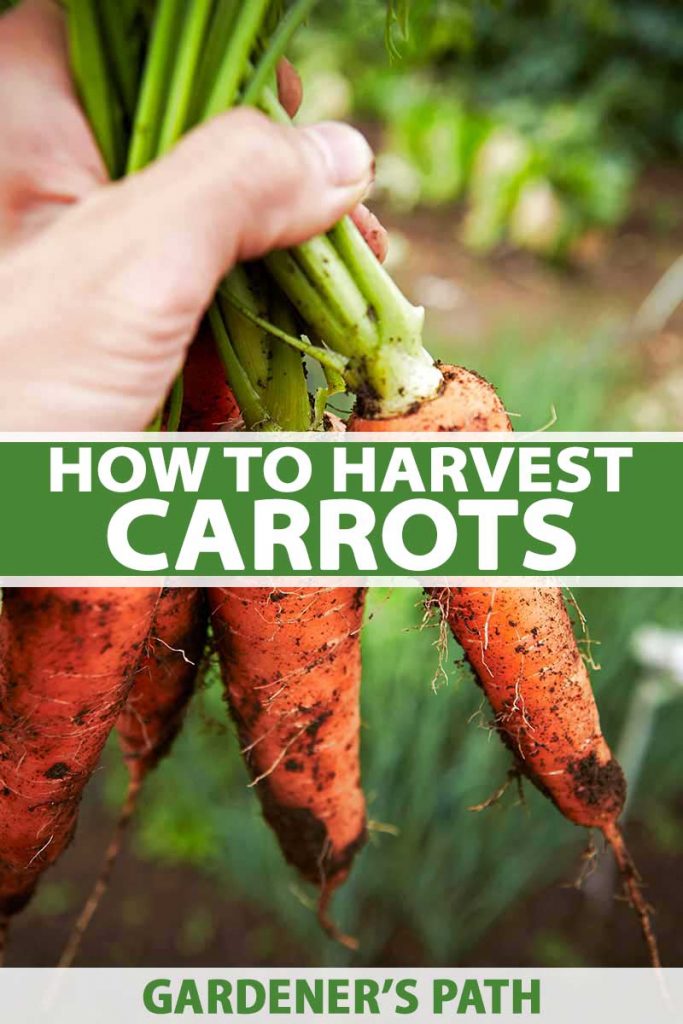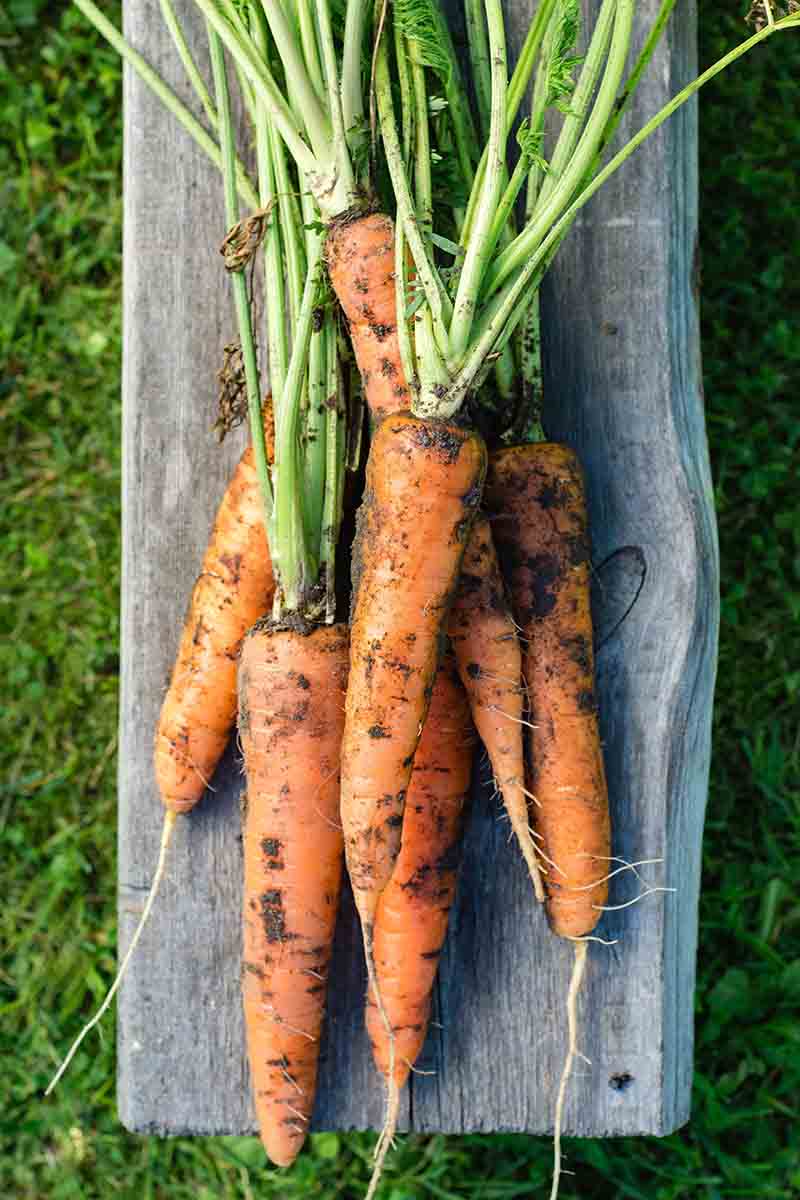Understanding the Importance of Timing in Carrot Harvesting
Carrot harvesting is a delicate process that requires careful attention to timing. Knowing when to pull carrots is crucial to ensure they are at their peak flavor, texture, and nutritional value. Carrots that are pulled too early may be small, fibrous, and lacking in sweetness, while those pulled too late may be over-mature, woody, and prone to spoilage.
The ideal time to harvest carrots depends on various factors, including the variety, weather conditions, and soil quality. Generally, carrots are ready to be pulled when they are between 1/2 to 1 inch in diameter. However, some varieties may be ready earlier or later than this. It’s essential to check on the carrots regularly to determine the optimal harvest time.
Carrots that are pulled at the right time will have a sweet, crunchy texture and a vibrant orange color. They will also be rich in vitamins, minerals, and antioxidants, making them a nutritious addition to a variety of dishes. On the other hand, carrots that are pulled too early or too late may be lacking in these qualities, making them less desirable for consumption.
So, how do you know when to pull carrots? The answer lies in observing the visual cues and performing a tactile test. By checking the size and color of the carrot tops and gently tugging on the carrot, you can determine if it’s ready to be harvested. In the next section, we’ll explore these methods in more detail, providing you with the knowledge you need to harvest your carrots at the perfect time.
Checking for Readiness: Visual Cues and Tactile Tests
When it comes to determining the readiness of carrots, there are several visual cues and tactile tests that can be used. One of the most obvious signs of readiness is the size and color of the carrot tops. As carrots mature, the tops will begin to yellow and fall over, indicating that the carrot is ready to be harvested.
Another visual cue is the size of the carrot itself. Check the carrot by gently digging around it with your fingers or a fork. If the carrot is the desired size, it’s likely ready to be pulled. However, be careful not to damage the carrot during this process.
In addition to visual cues, a tactile test can also be used to determine the readiness of carrots. Gently grasp the carrot top and tug on it. If the carrot comes out of the ground easily, it’s likely ready to be harvested. If it resists being pulled, it may need more time to mature.
It’s also important to check for any signs of damage or disease during the harvesting process. Check the carrot for any signs of rot, mold, or pest damage. If the carrot is damaged, it’s best to remove it from the soil to prevent the spread of disease to other carrots.
By using these visual cues and tactile tests, you can determine the readiness of your carrots and ensure that you’re harvesting them at the optimal time. This will help to ensure that your carrots are of the highest quality and flavor.
Remember, knowing how to know when to pull carrots is crucial to achieving a successful harvest. By paying attention to these visual cues and tactile tests, you can ensure that your carrots are ready to be enjoyed at their best.
How to Check Carrot Size and Shape
Checking the size and shape of carrots is an essential step in determining their readiness for harvest. Carrots come in a variety of shapes and sizes, and the ideal size will depend on the specific variety being grown. Generally, carrots are ready to be harvested when they are between 1/2 to 1 inch in diameter.
To check the size of carrots, gently dig around the carrot with your fingers or a fork, being careful not to damage the carrot. If the carrot is the desired size, it’s likely ready to be pulled. If it’s too small, it may need more time to mature.
In addition to size, the shape of the carrot can also be an indicator of its readiness. Carrots that are misshapen or deformed may be a sign of poor growing conditions or disease. Check for any signs of damage or disease, such as cracks, soft spots, or discoloration.
It’s also important to check for any signs of bolting, which can occur when carrots are exposed to stress or extreme weather conditions. Bolting can cause the carrot to become deformed or develop a woody texture, making it unpalatable.
By checking the size and shape of carrots, you can determine if they are ready to be harvested and ensure that you’re getting the best flavor and texture. Remember, knowing how to know when to pull carrots is crucial to achieving a successful harvest.
Regularly inspecting your carrots for size and shape can also help you identify any potential issues with your crop. By catching problems early, you can take steps to address them and ensure a healthy and productive harvest.
The Role of Weather and Climate in Carrot Harvesting
Weather and climate conditions play a significant role in carrot harvesting. Temperature, moisture, and sunlight can all impact the timing of carrot harvest. For example, carrots grown in cooler temperatures may mature more slowly than those grown in warmer temperatures.
Moisture is also an important factor in carrot harvesting. Carrots need consistent moisture to grow, but excessive moisture can lead to rot and other diseases. Drought, on the other hand, can cause carrots to become deformed or develop a woody texture.
Sunlight is also essential for carrot growth. Carrots need full sun to partial shade to grow, and a lack of sunlight can lead to weak and spindly growth.
Understanding the role of weather and climate in carrot harvesting can help you plan your harvest accordingly. For example, if you live in an area with a cool and wet climate, you may need to wait longer for your carrots to mature. On the other hand, if you live in an area with a warm and dry climate, you may need to harvest your carrots more quickly.
It’s also important to note that weather and climate conditions can affect the quality of your carrots. For example, carrots grown in areas with high levels of rainfall may be more prone to rot and other diseases. Carrots grown in areas with low levels of rainfall, on the other hand, may be more prone to drought stress.
By understanding the role of weather and climate in carrot harvesting, you can take steps to ensure a successful harvest. This includes choosing varieties that are well-suited to your climate, providing adequate moisture and sunlight, and monitoring weather conditions to determine the optimal harvest time.
Remember, knowing how to know when to pull carrots is crucial to achieving a successful harvest. By considering the role of weather and climate, you can make informed decisions about when to harvest your carrots and ensure the best possible quality.
Using Tools and Techniques to Aid in Harvesting
When it comes to harvesting carrots, having the right tools and techniques can make a big difference. Using the right tools can help minimize damage to the carrots, making them easier to store and enjoy. Here are some tools and techniques that can aid in carrot harvesting:
A garden fork is a simple and effective tool for harvesting carrots. By gently inserting the fork into the soil around the carrot, you can loosen the soil and lift the carrot out of the ground without damaging it.
A specialized carrot harvester is another tool that can be used to aid in harvesting. These harvesters are designed specifically for carrots and can help to minimize damage to the roots.
In addition to using the right tools, there are also several techniques that can be used to aid in harvesting. One technique is to harvest carrots in the morning, when the soil is typically cooler and more moist. This can help to make the carrots easier to pull out of the ground.
Another technique is to use a gentle pulling motion to remove the carrots from the soil. This can help to minimize damage to the roots and make them easier to store.
By using the right tools and techniques, you can make the carrot harvesting process easier and more efficient. This can help to ensure that your carrots are of the highest quality and flavor.
Remember, knowing how to know when to pull carrots is just the first step in the harvesting process. By using the right tools and techniques, you can ensure that your carrots are harvested at the optimal time and in the best possible condition.
Common Mistakes to Avoid When Harvesting Carrots
When it comes to harvesting carrots, there are several common mistakes that can be avoided to ensure a successful harvest. One of the most common mistakes is pulling carrots too early or too late. Pulling carrots too early can result in small, immature carrots that lack flavor and texture. On the other hand, pulling carrots too late can result in over-mature carrots that are woody and fibrous.
Another common mistake is not checking for signs of damage or disease before harvesting. Carrots that are damaged or diseased can be more prone to spoilage and can affect the quality of the entire harvest.
Not using the right tools or techniques can also lead to mistakes when harvesting carrots. Using a tool that is too sharp or too blunt can damage the carrots, while using a technique that is too rough can cause the carrots to break or become dislodged.
Additionally, not considering the weather and climate conditions can also lead to mistakes when harvesting carrots. Harvesting carrots in extreme weather conditions, such as during a heatwave or a heavy rainfall, can affect the quality of the carrots and make them more prone to spoilage.
By avoiding these common mistakes, you can ensure a successful harvest and enjoy delicious, fresh carrots. Remember, knowing how to know when to pull carrots is just the first step in the harvesting process. By being mindful of these common mistakes, you can take the necessary steps to ensure a successful harvest.
It’s also important to note that different varieties of carrots may have different harvesting requirements. Some varieties may be more prone to bolting or may require more specific weather conditions. By understanding the specific needs of your carrot variety, you can avoid common mistakes and ensure a successful harvest.
Post-Harvest Care: How to Store and Enjoy Your Carrots
After harvesting your carrots, it’s essential to store them properly to maintain their freshness and quality. Here are some tips on how to store and enjoy your carrots:
Store carrots in a cool, dark place with good ventilation. The ideal storage temperature is between 32°F and 40°F (0°C and 4°C). You can store carrots in a root cellar, a basement, or even a refrigerator.
Keep carrots away from direct sunlight, as it can cause them to become bitter and develop off-flavors. You can store carrots in a paper bag or a breathable container to maintain humidity and keep them fresh.
Don’t wash carrots before storing them. Excess moisture can cause carrots to rot and become spoiled. Instead, gently brush off any dirt or debris from the carrots before storing them.
Carrots can be stored for several months when properly cared for. You can enjoy them raw, steamed, roasted, or sautéed. They’re a versatile ingredient that can be used in a variety of dishes, from salads to soups to stews.
Some popular ways to enjoy carrots include making carrot juice, carrot cake, and carrot soup. You can also pickle carrots or make carrot jam to enjoy them throughout the year.
By following these tips, you can enjoy your carrots for months to come. Remember, knowing how to know when to pull carrots is just the first step in enjoying a bountiful harvest. By properly storing and caring for your carrots, you can enjoy them at their best.
Troubleshooting Common Issues with Carrot Harvesting
Despite following the best practices for carrot harvesting, issues can still arise. Here are some common problems that may occur and how to troubleshoot them:
Pests: Carrots can be susceptible to pests such as rabbits, deer, and insects. To prevent pest damage, use row covers or other barriers to protect the carrots. You can also use organic pest control methods such as neem oil or diatomaceous earth.
Diseases: Carrots can be affected by diseases such as root rot, leaf blight, and powdery mildew. To prevent disease, ensure good air circulation and water carrots regularly. You can also use organic fungicides such as copper or sulfur.
Weather damage: Carrots can be damaged by extreme weather conditions such as heavy rainfall, hail, or intense sunlight. To prevent weather damage, use row covers or other barriers to protect the carrots. You can also harvest carrots before extreme weather conditions occur.
Soil issues: Carrots can be affected by soil issues such as poor drainage, nutrient deficiencies, or pH imbalances. To prevent soil issues, ensure good soil quality and fertility. You can also use organic soil amendments such as compost or manure.
By troubleshooting common issues with carrot harvesting, you can ensure a successful harvest and enjoy delicious, fresh carrots. Remember, knowing how to know when to pull carrots is just the first step in achieving a bountiful harvest. By being prepared for common issues, you can take the necessary steps to ensure a successful harvest.







